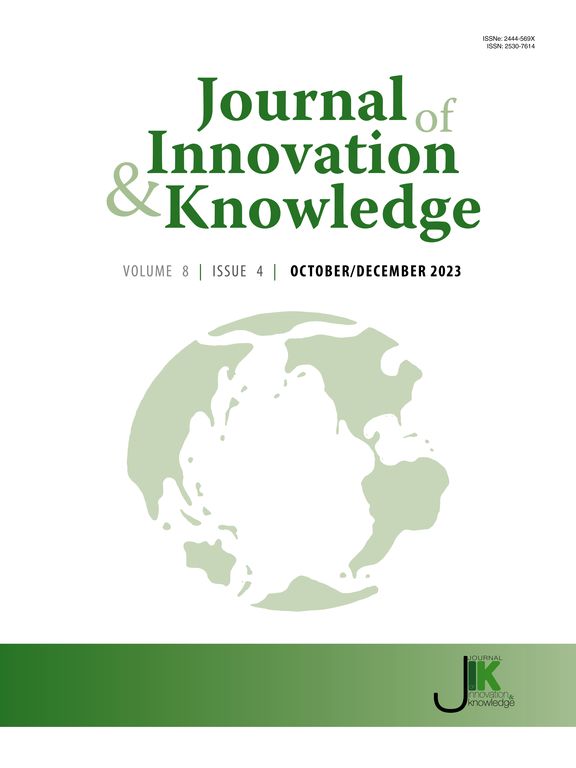Technological spillovers from imported intermediate goods on heterogeneous innovation
IF 15.5
1区 管理学
Q1 BUSINESS
引用次数: 0
Abstract
Against the backdrop of the profound adjustment of the global value chain, how technological spillovers from imported intermediate goods affect the heterogeneous innovation paths of firms is a core issue for developing countries. Based on the panel data covering 278 prefecture-level cities in China, this paper constructs micro-trade and spatial Durbin models to empirically examine the differential impacts of technological spillovers from imported intermediate goods on high- and low-technology innovation and their spatial effects. This study finds that (1) technological spillovers from imported intermediate goods significantly increase the high-technology innovation level of local firms, generating a 'technological dividend'. However, they have no significant effect on low-technology innovation, potentially triggering a 'low-end lock-in' effect. (2) Technological spillovers reduce innovation costs by enhancing regional absorptive capacity, where the import of semifinished products directly drives high-technology breakthroughs through product innovation, while the import of components indirectly optimizes innovation efficiency through process innovation. (3) The spatial spillover effect of high-technology innovation is significant, forming innovation clusters centred on the Yangtze and Pearl River Deltas, while the regional collaborative effect of low-technology innovation is relatively weak. This research provides a theoretical basis for developing countries to balance import expansion and independent innovation. It suggests strengthening regional absorptive capacity and innovation ecosystem construction to avoid the risk of low-end lock-in and to achieve global value chain upgrading.
进口中间产品对异质创新的技术溢出效应
在全球价值链深度调整的背景下,进口中间产品的技术溢出如何影响企业异质创新路径是发展中国家面临的核心问题。本文基于中国278个地级市的面板数据,构建微观贸易和空间德宾模型,实证考察进口中间产品技术溢出对高、低技术创新的差异影响及其空间效应。研究发现:(1)进口中间产品的技术溢出显著提高了本地企业的高技术创新水平,形成了“技术红利”。然而,它们对低技术创新没有显著影响,可能引发“低端锁定”效应。(2)技术溢出效应通过增强区域吸收能力降低创新成本,其中半成品进口通过产品创新直接推动高技术突破,零部件进口通过工艺创新间接优化创新效率。③高技术创新的空间溢出效应显著,形成了以长三角和珠三角为中心的创新集群,而低技术创新的区域协同效应相对较弱。本研究为发展中国家平衡进口扩张与自主创新提供了理论依据。建议加强区域吸收能力和创新生态系统建设,避免低端锁定风险,实现全球价值链升级。
本文章由计算机程序翻译,如有差异,请以英文原文为准。
求助全文
约1分钟内获得全文
求助全文
来源期刊

Journal of Innovation & Knowledge
Multiple-
CiteScore
16.10
自引率
12.70%
发文量
118
审稿时长
37 days
期刊介绍:
The Journal of Innovation and Knowledge (JIK) explores how innovation drives knowledge creation and vice versa, emphasizing that not all innovation leads to knowledge, but enduring innovation across diverse fields fosters theory and knowledge. JIK invites papers on innovations enhancing or generating knowledge, covering innovation processes, structures, outcomes, and behaviors at various levels. Articles in JIK examine knowledge-related changes promoting innovation for societal best practices.
JIK serves as a platform for high-quality studies undergoing double-blind peer review, ensuring global dissemination to scholars, practitioners, and policymakers who recognize innovation and knowledge as economic drivers. It publishes theoretical articles, empirical studies, case studies, reviews, and other content, addressing current trends and emerging topics in innovation and knowledge. The journal welcomes suggestions for special issues and encourages articles to showcase contextual differences and lessons for a broad audience.
In essence, JIK is an interdisciplinary journal dedicated to advancing theoretical and practical innovations and knowledge across multiple fields, including Economics, Business and Management, Engineering, Science, and Education.
 求助内容:
求助内容: 应助结果提醒方式:
应助结果提醒方式:


